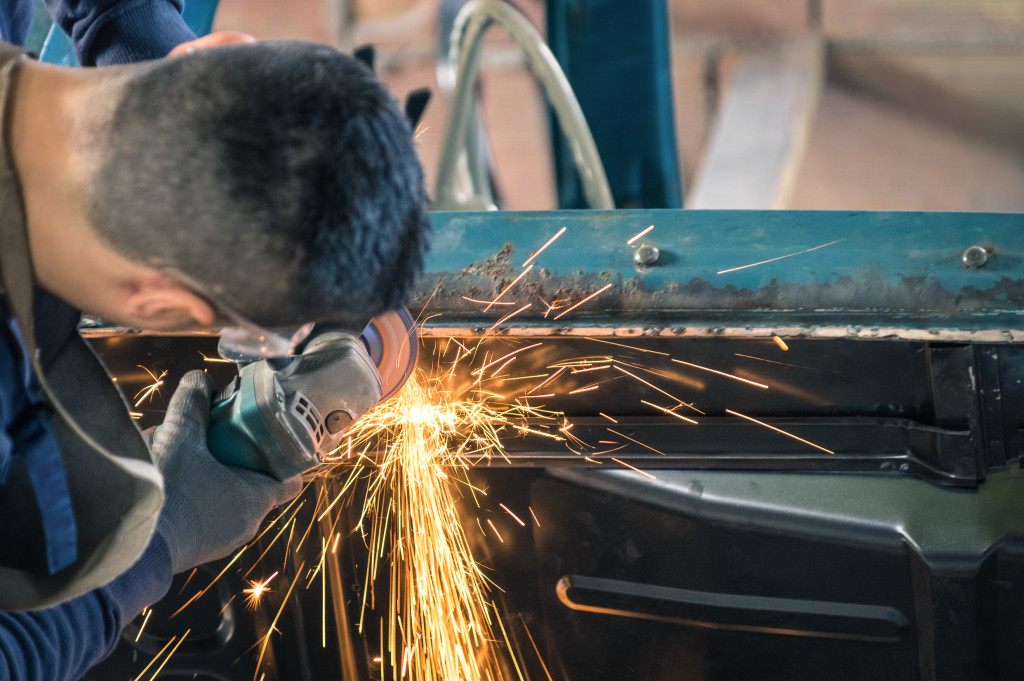Businesses can benefit from clean welds in many ways. First, they ensure the strength and safety of their products. Second, they save money by reducing the need for rework caused by poor welds. Finally, they increase their profits by producing high-quality products that meet or exceed customer expectations.
Spotting a Clean Weld
As a person in the construction industry, you probably know what clean welds look like. However, clean welds look different depending on the type of welding done. Here’s a quick run-down:
- Stick Welding – A good weld in stick welding looks straight and uniform, with consistent thickness throughout the bead. There should be no spatter, holes, undercutting, breaks, or cracks in the bead.
- TIG Welding – TIG welding produces beautiful weld patterns if done right. The bead should not be too wide, and they should be neatly layered in a consistent pattern. There should also be no slag, burnout, or errant beads.
- MIG Welding – MIG welding is easier to learn than TIG welding, but good welds in MIG welding is similar to those in TIG. The bead should be straight and uniform, and it should be smooth. There should be no dips, craters, cracking, or holes.
- Oxy Welding – In oxy welding, the bead should be uniform, and there should be no holes or globs of melted metal
Clean Welds are Strong and Safe
Welds that are clean and well-done are strong and can hold up under a lot of pressure. They provide a secure joint and increase the structural integrity of whatever is being welded. This is especially important in construction, where safety is of utmost importance. Slag can cause abrasion and lacerations among workers who touch the bead. This is why it’s important to clean up welds after, too. To clean up slag or redo a weld, you can use a grinder, or you can buy weld cleaning solutions such as TIG brush and fluid. A well-done weld also ensures that a structure will not collapse or fall apart. This is the most important, as structural failure \could potentially lead to injuries or death of workers and clients.
In addition to safety, clean welds also result in a better finished product. They look nicer and are less likely to corrode or rust over time. This can be important for businesses that want their products to look good and last long. After all, no one wants to pay for a product that looks like it was shoddily made. Clean welds create a solid bond that is less likely to fail, meaning that customers can trust in the quality of the product.
Clean Welds Keep You Profitable
Welding companies can keep themselves profitable by ensuring that their welds are clean and well-done. For one, clean welds are signs of good quality. If your customers see poor welds on your products, they will not want to pay for them. They will not likely buy your products again if they have already bought some, and this can lead to additional costs such as repair costs or bad word-of-mouth. Similarly, on construction and other on-site projects, clean welds reduce the amount of time and consumables you spend cleaning and redoing welds. Clean welds are also unlikely to collapse, letting you avoid litigation for injuries and neglect. Lastly, if your client likes your work, they will likely refer you to other people who need the same services.

Redoing a Bad Weld
Even the most experienced welders make bad welds every now and then. Thankfully, you can just take off the weld, clean up the joint ends, and try again. You can do this by heating up the joint, using a grinder, or using a weld brush. Wipe down the pieces to make sure there is no grease, which might cause porosity. Before redoing the joint, make sure that you are using the proper polarity with the consumable you are using. Check the type of shielding and flow rate to make sure they are appropriate. Clean the nozzles, too! Increasing the angle of the torch to the plate may also help improve your bead setting and avoid splatter. To avoid undercutting when redoing your weld, make sure that the voltage is not too high and the arc not too large for the metal. Undercuts also happen when you set the flow rate way too high or when you hold the electrode too close.
Conclusion
Welders who produce clean welds are providing a strong and safe finished product. Not only does this look nicer, but it also increases the longevity of what is being welded. In addition to safety and quality, businesses can also keep themselves profitable by ensuring their welds are clean. Poorly done welds lead to additional costs in terms of repair or replacement, while clean welds let companies avoid litigation for injuries and neglect. Finally, a well-done clean weld will result in customer satisfaction and word-of-mouth marketing that can be beneficial to any business.